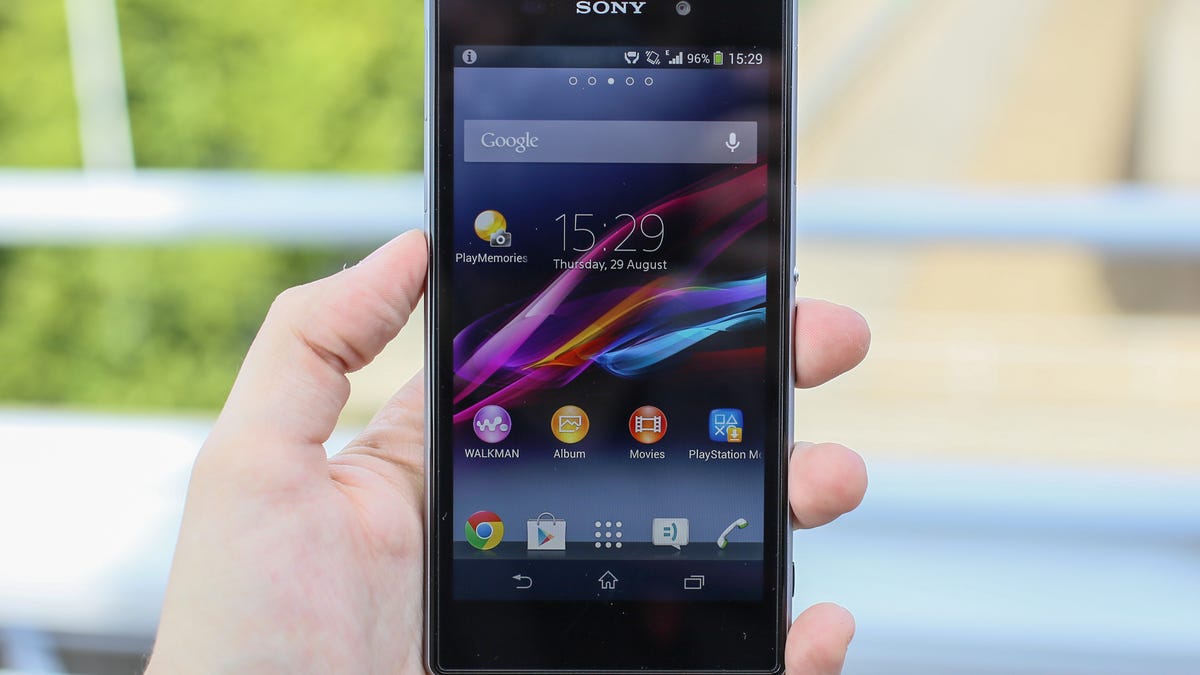Why the Sony Xperia Z1 is smart to put photos first
Building in a higher-end camera doesn't just mean better pictures of your friends. It means smartphones can fulfill their potential as a live backup of your visual memory.

Sony's been flailing in the mobile market, but fans should take some heart that the company is getting its priorities straight with the new Xperia Z1.
The actual performance of the new flagship smartphone remains to be seen, but Sony made clear what it hopes will be the biggest selling point: its photographic abilities. During the press conference announcing the Z1 at the IFA electronics show, Sony Chief Executive Kazuo Hirai barely mentioned anything in the phone besides its physically large 20.7-megapixel image sensor, its high-end G lens, its Bionz image-processing chip, and a range of photo and video utilities.
I'm a shutterbug, so of course all that appeals to me. Everybody else compulsively records dinners with friends, first days at school, and music concerts, so a good camera should appeal to them, too.
But there's actually a different reason I think high photo quality is important. Cameras aren't just for taking pictures. Humans are visual creatures, and computers are becoming them, too. The better the camera, the better smartphones can help us navigate the world.
Here's what I'm talking about. In the last month, I used my camera to record the opening times of Romanesque churches in the Vall de Boi in Spain, the business card of a B&B owner in case I ran into trouble on a bike trip, a prescription from my doctor, the telephone number of my mother-in-law's appliance repair company, my dentist's handwritten recommendation of an orthodontist, a diagram of the peculiar layout of the Passeig de Gracia Metro stop in Barcelona, and perhaps most important for me, the hiking maps printed on signs at several trailheads in the Pyrenees mountains. I even scanned a couple QR codes to get online English-language translations of some signs at historic sites.
Basically, smartphones are becoming augmented visual memory. And believe me, my Galaxy Nexus's pathetic camera showed its shortcomings many, many times.
Most of the time I just snap a photo of the relevant information and look at the picture when I need it. But increasingly, with image recognition and optical character recognition with Google and Microsoft, computers are making sense of what we photograph. Today's JPEGs will become fodder for tomorrow's searches, reminders, address books, and navigation destinations. Augmented reality, with the phone connecting its camera imagery with its location data, will help make sense of things like signs in foreign languages, navigation, and historic monuments.
Indeed, Sony is trying to build some of this technology into its smartphone so software can, among other things, recognize landmarks.
Think about how much information humans process with our eyes that could be handled by a computer today: menus, road signs, receipts, museum art descriptions, faces of family and friends.
Sure, a lot of that is noise you won't miss when it slips out of your short-term memory, but plenty of it is useful, too. The better the camera, the more useful this information will be.
The main reason to have a good camera is take good photos and videos, of course, and that's doubtless the main reason Sony is emphasizing its camera. I don't mean to suggest that people are buying smartphones so they have better electronic eyes. I'm just saying I think the camera is still underrated as a smartphone feature. Maybe you want a big phablet screen, maybe you want eight-core processors for better in-game physics, maybe you want a stylus for doodling, maybe you want a pull-out keyboard -- fine. The Xperia Z1's waterproof exterior is swell. But everybody needs a camera, and I expect we'll see them in use more, not less, in coming years.
Sony isn't alone in emphasizing camera image quality. The Nokia 1020 Windows Phone has a big bulge to accommodate its mammoth 41-megapixel sensor and lens. The Samsung Galaxy S4 Zoom is a phone-camera hybrid. Less exotic but probably more important in the long run, recent iPhones have been consistent top performers.
Sony's got an interesting new angle to its approach -- the snap-on Cyber-shot QX100 and QX10 cameras that bring their own lenses and image sensors to the camera. They're awkward and not cheap, but these days when people leave their photo-only cameras at home, they're an interesting new option -- especially since they come with all the smartphone advantages of mobile network access and sophisticated, downloadable apps.
Sony's approach isn't a guarantee of success. But at least it's movement in the right direction.

